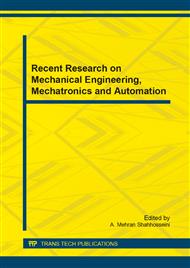p.331
p.338
p.342
p.347
p.353
p.358
p.363
p.368
p.373
Mechanical Characterization of Tatanium-Based Gradient Bioceramic Composite by Laser Cladding
Abstract:
The gradient calcium phosphate bioceramic coating was produced on titanium alloy substrate by laser cladding. The microstructure, microhardness, fracture toughness, and residual stress of the tatanium-based gradient bioceramic composite coating were investigated. The results show that the microhardness gradually decreases with further depth increasing cross-section. The highest microhardness of the coating and the transition layer is 1544HV and 1160HV, respectively. The fracture toughness KIC is 3.72±0.03 MPa·m1/2 of bioceramic coating and 4.55±0.02 MPa·m1/2 of the transition layer, which is closely resembles the human compact bone. Furthermore, the residual stress gradually decreases from the coating to substrate, which is 221MPa between ceramic layer and the transition layer and 108MPa between the transition layer and substrate. This distribution is conforms to gradient composition design, which reducing harm of the specimen deformation and cracking.
Info:
Periodical:
Pages:
353-357
Citation:
Online since:
July 2014
Authors:
Keywords:
Price:
Сopyright:
© 2014 Trans Tech Publications Ltd. All Rights Reserved
Share:
Citation:


